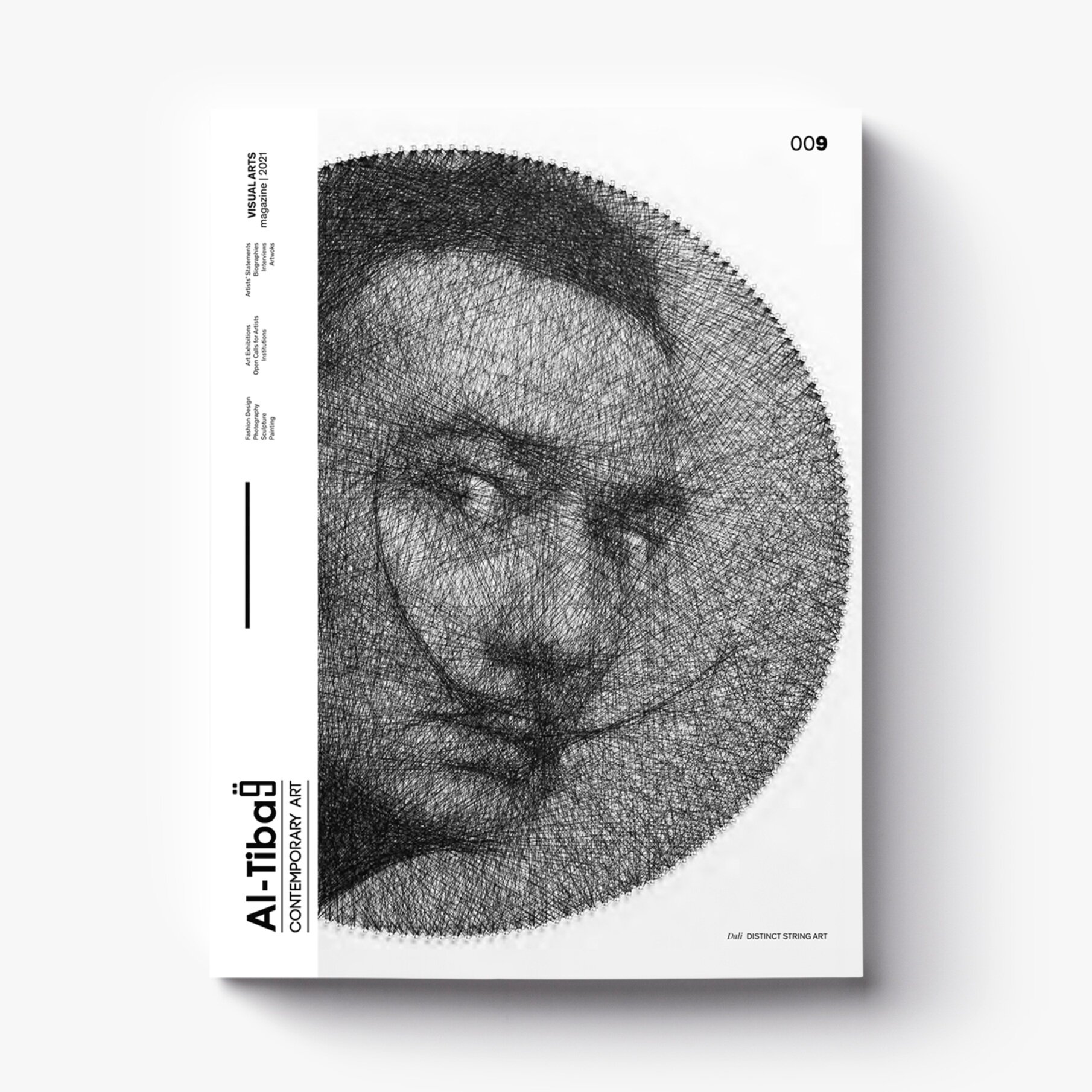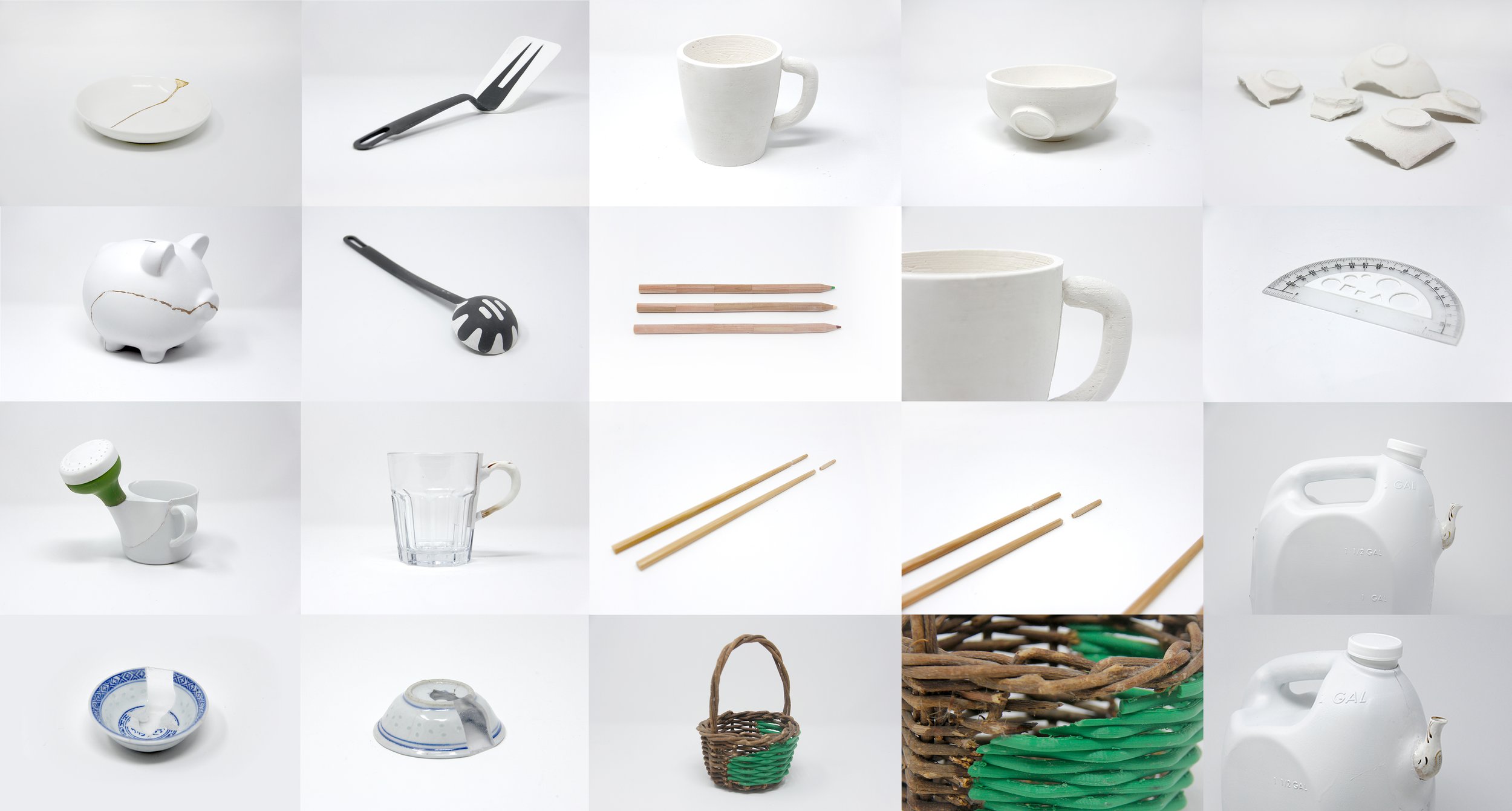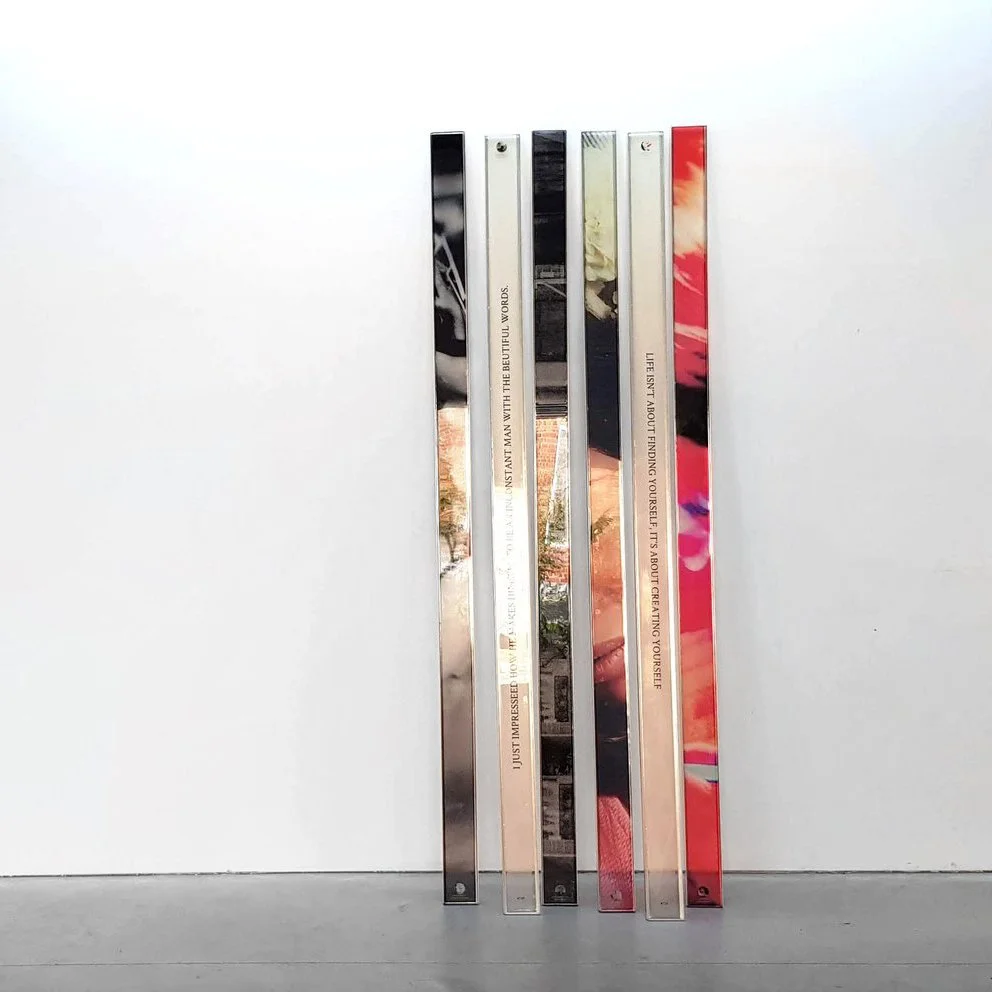INTERVIEW | Andreea Vasile-Hoxha
10 Questions with Andreea Vasile-Hoxha
ISSUE09 ART MAGAZINE | FEATURED ARTIST
Andreea is an award-winning architectural & landscape architectural designer and researcher whose interests lie between the intersection of geology, biology, ecology, horticulture, and landscape architecture in the context of the (post-) Anthropocene. Her research and practice agenda focus on understanding the perpetually changing ecosystems surrounding us, while pushing the boundaries of the traditional methods of deploying the designs into the built environment. Her graduate thesis, "After Plastics: The Gardens of the Glacial Foreland", has been granted several national and international awards from the Boston Society of Landscape Architects (BSLA), the American Society of Landscape Architects (ASLA), as well as the World Landscape Architects (WLA).
Andreea practiced at Rossetti in Detroit and Bjarke Ingels Group - BIG in New York City, and she is currently a Site Designer at SmithGroup. She holds a Bachelor of Science in Architecture from Lawrence Technological University and a Master of Landscape Architecture from Harvard Graduate School of Design, where she was named the 2020 Gregory S. Baldwin Fellow.
Andreea Vasile-Hoxha
After Plastics: The Gardens of the Glacial Foreland | PROJECT DESCRIPTION
"After Plastics: The Gardens of the Glacial Foreland" is a transitional landscape – from glacial to post-glacial – where microplastics play a critical role in the development of a new plant growth pattern, strategically augmented through the intervention of the landscape architect in close collaboration with the gardener, geologist, biologist, mycologist, and ecologist. The production of the garden is in continuous evolution as the landscape is perpetually reformed through a new compositional stratum of the post-Anthropocene material: plastics. Its operation relies on a metabolic process that transforms and transfers novel material conditions between an interconnected web of mycelium, slime mold, ancient lichens awakened from their dormant state, and a wide range of Allium species.
The project questions the potential emergence of microplastic particles in the most pristine places on Earth over the next two centuries and the imminent implications on landscape systems and their formation through parallels between geological and biological time scales. Organized in a series of laboratories within the proposed Glacial Foreland Institute (GFI) – Material Taxonomy, Material Ecology, Landscape Performance, and Garden Prototyping - "After Plastics" engages in a telescopic lens from the emerging micro scalar ecologies of biological structure and chemical compounds to the larger scale of networks and flows that generate new material ecologies.
After Plastics © Andreea Vasile-Hoxha
INTERVIEW
Despite your young age, you have worked with important firms and received some prestigious awards for your work. What is your background, and what drew you to architecture?
I was born and raised in Romania, in the region of the Danube Delta, where I have always been surrounded by both city and nature. Since I was a child, I have been interested in the creative fields, ranging from fashion design to architecture, visual arts, and music. To this day, I often venture off into exploring new mediums that could add another layer of depth to my work. Ultimately, my fascination with the (built) environment and curiosity of understanding and implementing means and methods to the spaces we as humans and flora and fauna of species inhabit, is what drew me to the broader field of Architecture.
You are originally from Romania, but you currently live in the US. How did this change influence your work?
The way in which I approach a project comes down to the two different education systems I was exposed to. In Romania, education is based on a polyvalent/comprehensive approach, where you must study a diverse selection of subjects to a high degree all the way through high school. As a student, I wondered how knowing the formula of a chemical reaction between two substances would be useful in my future architectural career. Upon starting my college studies in the US, and later my graduate studies, I began to understand the logic behind such formulas and question their relationship to the larger systems and processes distinctive to my design field. The analytical approach of the US education system juxtaposed with the extensive and far-reaching Romanian education drove me into expanding my areas of interest and expertise significantly beyond the field of architecture and design.
After Plastics © Andreea Vasile-Hoxha
Your project "After Plastics: The Gardens of the Glacial Foreland" is an ambitious research on the impact that microplastic particles could potentially have on the most pristine places on Earth over the next two centuries. How did you get involved in this theme?
In the summer of 2019, I came across a small series of articles and scientific papers that were raising awareness on the overall theme of atmospheric microplastics dispersal in the most remote places on Earth, as well as a potentially novel symbiotic relationship between such particles and a network of organisms within the soil compounds. Recognizing the need for in-depth research on this topic, from a pragmatic to a provocative framework, became the catalyst for embarking on this project as my graduate thesis in Landscape Architecture.
You analyze the concepts of Anthropocene and post-Anthropocene, two key concepts to understand the world we live in. Tell us about your meticulous artistic process that leads you to create such a project?
Given the highly scientific nature of the work, while approaching the project through the lens of the Landscape Architect, I encountered a series of challenges along the way that I believe had a positive impact on the overall outcome. First, it meant that I needed to have a comprehensive understanding of not only the subject matter but its nuances coming from fields such as biology, ecology, mycology, horticulture, geology, geography, to name a few. Second, I had to integrate the design process and methodologies within an extensive body of research. Third, I needed to find effective means of communicating the ideas to a broad audience with various expertise. To achieve these goals, I distributed the work within four design laboratories, each engaged with focused studies: Landscape Performance, Material Taxonomy, Material Ecology, and Garden Prototyping. They all function under the umbrella of the Glacial Foreland Institute, an entity envisioned for current and future design research, primarily focused on the glacial forelands across the globe during the Anthropocene and Post-Anthropocene – a landscape typology that is already becoming predominant due to the glacial mass melt.
After Plastics © Andreea Vasile-Hoxha
After Plastics © Andreea Vasile-Hoxha
What do you see as the strengths of your project, visually or conceptually?
I believe that the project has been appreciated and acknowledged so far due to the deep dive into various branches of science, despite my limited knowledge in most cases, and the finding of common threads between scientific-proven concepts and design-oriented propositions.
Oftentimes, when talking about the environment, we feel powerless confronted with massive climate changes and cataclysms. What is your role as an Artist in reversing this situation?
I could dedicate an entire conversation to this topic, as I don't think there is one direct answer for it. However, I can summarize that I believe in the collective power, which comes with awareness, education, and access to resources. As an individual and as an Artist, I can contribute to the awareness component by provoking the audience with a glimpse of the near future, whether utopian or dystopian and creating a space for conversation. However, in my opinion, that is not nearly enough for a reversal scenario, as we must act now. Unfortunately, those truly in the power of immediate changes conform to the political constructs that are independent, if not against, of the accelerated timeline of climate change.
After Plastics © Andreea Vasile-Hoxha
Tell us about the impact of art and architecture when it comes to raising awareness on Nature and the future?
Artists, architects, and designers are gifted with the ability to envision a future artifact, a future space, and communicate their visions with distinct audiences, whether that is through a final art piece or a rendered image acting as an intermediary between the architect's mind and the upcoming built space. Our ability to provoke the public's imagination and understanding of the future has been harvested more and more by using sustainable materials and production methods, promoting a disengagement from the linear cycles of material sourcing and waste production, and developing models of circular economies.
After Plastics © Andreea Vasile-Hoxha
The past months had a massive impact on our ways of experiencing the world. We discovered we are just a replaceable part of this system, and Nature would find its way back once we disappear. How did the pandemic influence your work and research?
The environment will always adapt, regardless of our (human) presence. It will perpetually create new organisms, new symbiotic relationships, novel networks, on time scales that could range from several months to thousands and millions of years. Right now, we are just a tiny piece of the puzzle, but today's actions will dictate the near and distant future of the planet.
What are you working on now? Do you have any new projects in development?
I am currently working with a multidisciplinary design firm where I am focusing on gaining more experience within the Landscape Architecture practice field and become a licensed professional. On the other side, for the past year, I have been revisiting and expanding the research of "After Plastics", studying methods of inoculation and fabrication with organic material within a mini-physical laboratory built in my studio, with outcomes that are teaching me the value of time and patience. And improvisation.
And finally, what are your goals for this year and 2022?
"After Plastics" is far from being a finished project. My goal for the upcoming year is to develop and establish the collaborative research and design framework of the Glacial Foreland Institute, which will hopefully grow into a series of partnerships.

























